Latest Posts by riekod - Page 4
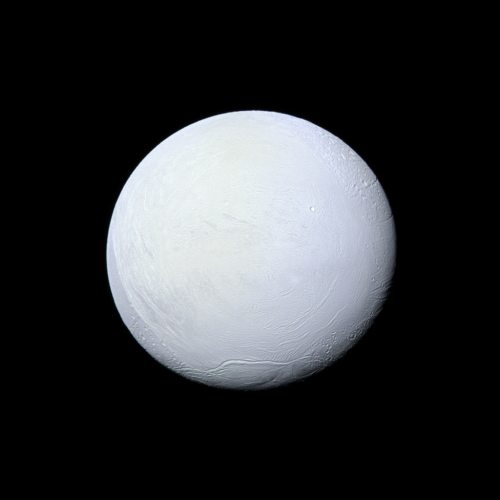
Saturn’s moon Enceladus, covered in snow and ice, resembles a perfectly packed snowball in this image from NASA’s Cassini mission.
Image credit: NASA/JPL-Caltech/Space Science Institute
What if we can breathe in space but the Government just tells us we cant so that we dont try to escape.

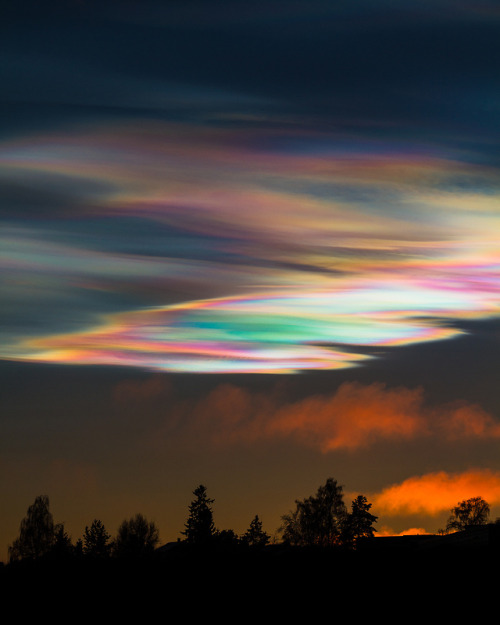
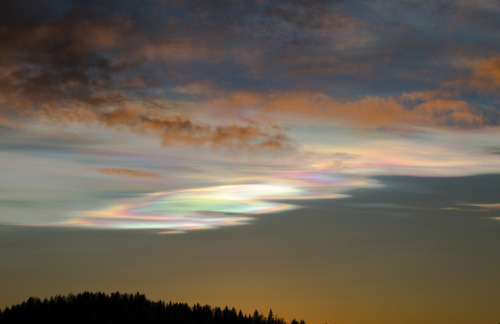

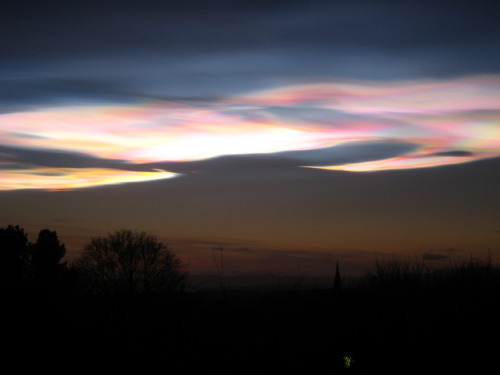


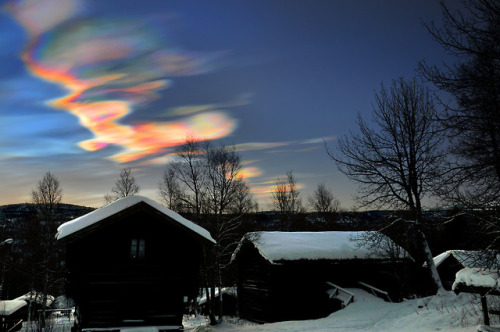
Polar stratospheric clouds or PSCs, also known as nacreous clouds, are clouds in the winter polar stratosphere at altitudes of 15,000–25,000 meters (49,000–82,000 ft). They are best observed during civil twilight when the sun is between 1 and 6 degrees below the horizon as well as in winter and in more northerly latitudes. They are implicated in the formation of ozone holes. The effects on ozone depletion arise because they support chemical reactions that produce active chlorine which catalyzes ozone destruction, and also because they remove gaseous nitric acid, perturbing nitrogen and chlorine cycles in a way which increases ozone destruction.
source / images: x, x, x, x, x, x, x, x
Tools of the Trade: How Parker Solar Probe Will Study the Sun
Our Parker Solar Probe will get closer to the Sun than any spacecraft has ever gone – it will fly right through the Sun’s corona, part of the Sun’s atmosphere.

This spacecraft is full of cutting-edge technology, from its heat shield down to its guidance and control systems. It also carries four suites of advanced instruments designed to study the Sun in a multitude of ways.
1. Measuring particles
Two of Parker Solar Probe’s instrument suites are focused on measuring particles – electrons and ions – within the corona.
One of these particle-measuring instrument suites is SWEAP (Solar Wind Electrons Alphas and Protons). SWEAP counts the most common particles in the solar wind – the Sun’s constant outflow of material – and measures their properties, like velocity, density and temperature. Gathering this information about solar wind particles will help scientists better understand why the solar wind reaches supersonic speeds and exactly which part of the Sun the particles come from.

One instrument in the SWEAP suite is the Solar Probe Cup. Most of the instruments on Parker Solar Probe stay safe and cool in the shadow of the heat shield, but the Solar Probe Cup is one of the few that sticks out. That’s so it can capture and measure particles streaming straight out from the Sun, and it had to go through some intense testing to get ready for this position in the Sun’s incredibly hot corona.

Credit: Levi Hutmacher/Michigan Engineering
The ISʘIS suite (pronounced EE-sis, and including the symbol for the Sun in its acronym) also measures particles. ISʘIS is short for Integrated Science Investigation of the Sun, and this instrument suite measures particles that move faster – and therefore have more energy – than the solar wind.
These measurements will help scientists understand these particles’ lifecycles – where they came from, how they got to be traveling so fast (these particles can reach speeds more than half the speed of light!) and what path they take as they travel away from the Sun and into interplanetary space.

2. Taking pictures – but not of the Sun’s surface.
WISPR (Wide-Field Imager for Parker Solar Probe) has the only two cameras on Parker Solar Probe – but they’re not pointed directly at the Sun. Instead, WISPR looks out the side of the spacecraft, in the direction it’s traveling, looking at the space Parker Solar Probe is about to fly through. From that vantage point, WISPR captures images of structures within the corona like coronal mass ejections, or CMEs. CMEs are clouds of solar material that occasionally explode from the Sun at millions of miles per hour. Because this solar material is magnetized, CMEs can trigger geomagnetic storms when they reach Earth – which, in turn, can cause effects like auroras and even, in extreme cases, power outages.

Right now, our observations of events like these come from satellites orbiting near Earth, so WISPR will give us a whole new perspective. And, scientists will be able to combine WISPR’s images with Parker Solar Probe’s direct particle measurements to get a better idea of how these structures change as they travel.

3. Studying electric & magnetic fields
The FIELDS instrument suite is appropriately named: It’s what scientists will use to study the electric and magnetic fields in the corona.
Electric and magnetic fields are key to understanding what happens, not only on the Sun, but throughout space, because they are the primary driver accelerating charged particles. In particular, a process called magnetic reconnection – when magnetic field lines explosively realign, sending particles rocketing away at incredible speeds – is thought to drive solar explosions, as well as space weather effects on Earth, like the aurora.

FIELDS measures electric and magnetic field at high time resolution, meaning it takes lots of measurements in a short amount of time, to track these processes and shed some light on the mechanics underlying the Sun’s behavior. FIELDS’ measurements are precisely synced up with those of the SWEAP suite (one of the sets of instruments studying particles) so that scientists can match up the immediate effects that electric and magnetic fields have on the material of the solar wind.

Parker Solar Probe launches summer 2018 on its mission to study the Sun. Keep up with the latest on the mission at nasa.gov/solarprobe or follow us on Twitter and Facebook.
Make sure to follow us on Tumblr for your regular dose of space: http://nasa.tumblr.com.
Thoughts and explanation about time travelling through a black hole?
A black hole curves the space-time fabric to an extreme point called singularity. And since space and time are working together, according to the theory of relativity, curvature and gravity also affect time.
This is best illustrated by one person (call them Unlucky) falling into a black hole while another person (call them Lucky) watches. From Lucky’s perspective, Unlucky’s time clock appears to be ticking slower and slower. This is in accordance with Einstein’s theory of general relativity, which (simply put) says that time is affected by how fast you go, when you’re at extreme speeds close to light. The black hole warps time and space so much that Unlucky’s time appears to be running slower. From Unlucky’s perspective, however, their clock is running normally and Lucky’s is running fast.
sending your selfies to NASA because you’re a star
Gamma-ray Bursts: Black Hole Birth Announcements
Gamma-ray bursts are the brightest, most violent explosions in the universe, but they can be surprisingly tricky to detect. Our eyes can’t see them because they are tuned to just a limited portion of the types of light that exist, but thanks to technology, we can even see the highest-energy form of light in the cosmos — gamma rays.
So how did we discover gamma-ray bursts?
Accidentally!

We didn’t actually develop gamma-ray detectors to peer at the universe — we were keeping an eye on our neighbors! During the Cold War, the United States and the former Soviet Union both signed the Nuclear Test Ban Treaty of 1963 that stated neither nation would test nuclear weapons in space. Just one week later, the US launched the first Vela satellite to ensure the treaty wasn’t being violated. What they saw instead were gamma-ray events happening out in the cosmos!

Things Going Bump in the Cosmos
Each of these gamma-ray events, dubbed “gamma-ray bursts” or GRBs, lasted such a short time that information was very difficult to gather. For decades their origins, locations and causes remained a cosmic mystery, but in recent years we’ve been able to figure out a lot about GRBs. They come in two flavors: short-duration (less than two seconds) and long-duration (two seconds or more). Short and long bursts seem to be caused by different cosmic events, but the end result is thought to be the birth of a black hole.

Short GRBs are created by binary neutron star mergers. Neutron stars are the superdense leftover cores of really massive stars that have gone supernova. When two of them crash together (long after they’ve gone supernova) the collision releases a spectacular amount of energy before producing a black hole. Astronomers suspect something similar may occur in a merger between a neutron star and an already-existing black hole.

Long GRBs account for most of the bursts we see and can be created when an extremely massive star goes supernova and launches jets of material at nearly the speed of light (though not every supernova will produce a GRB). They can last just a few seconds or several minutes, though some extremely long GRBs have been known to last for hours!

A Gamma-Ray Burst a Day Sends Waves of Light Our Way!
Our Fermi Gamma-ray Space Telescope detects a GRB nearly every day, but there are actually many more happening — we just can’t see them! In a GRB, the gamma rays are shot out in a narrow beam. We have to be lined up just right in order to detect them, because not all bursts are beamed toward us — when we see one it’s because we’re looking right down the barrel of the gamma-ray gun. Scientists estimate that there are at least 50 times more GRBs happening each day than we detect!

So what’s left after a GRB — just a solitary black hole? Since GRBs usually last only a matter of seconds, it’s very difficult to study them in-depth. Fortunately, each one leaves an afterglow that can last for hours or even years in extreme cases. Afterglows are created when the GRB jets run into material surrounding the star. Because that material slows the jets down, we see lower-energy light, like X-rays and radio waves, that can take a while to fade. Afterglows are so important in helping us understand more about GRBs that our Neil Gehrels Swift Observatory was specifically designed to study them!

Last fall, we had the opportunity to learn even more from a gamma-ray burst than usual! From 130 million light-years away, Fermi witnessed a pair of neutron stars collide, creating a spectacular short GRB. What made this burst extra special was the fact that ground-based gravitational wave detectors LIGO and Virgo caught the same event, linking light and gravitational waves to the same source for the first time ever!

For over 10 years now, Fermi has been exploring the gamma-ray universe. Thanks to Fermi, scientists are learning more about the fundamental physics of the cosmos, from dark matter to the nature of space-time and beyond. Discover more about how we’ll be celebrating Fermi’s achievements all year!
Make sure to follow us on Tumblr for your regular dose of space: http://nasa.tumblr.com

Lunar eclipse 27 july 2018

The Andromeda Galaxy Floats Above the Dawn Clouds - May 6, 2017
Joseph Brimacombe

Pluto Found - January 23, 1930
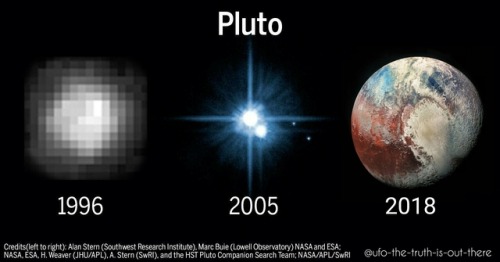

This image shows something spectacular: a massive galaxy cluster that it is warping the space around it! The cluster, whose heart is at the centre of the frame, is named RCS2 J2327, and is one of the most massive clusters known at its distance or beyond.
Massive objects such as RCS2 J2327 have such a strong influence on their surroundings that they visibly warp the space around them. This effect is known as gravitational lensing. In this way, they cause the light from more distant objects to be bent, distorted, and magnified, allowing us to see galaxies that would otherwise be far too distant to detect.
Credit: ESO, ESA/Hubble & NASA

Pale Blue Dot
Look again at that dot. That’s here. That’s home. That’s us. On it everyone you love, everyone you know, everyone you ever heard of, every human being who ever was, lived out their lives. The aggregate of our joy and suffering, thousands of confident religions, ideologies, and economic doctrines, every hunter and forager, every hero and coward, every creator and destroyer of civilization, every king and peasant, every young couple in love, every mother and father, hopeful child, inventor and explorer, every teacher of morals, every corrupt politician, every “superstar,” every “supreme leader,” every saint and sinner in the history of our species lived there–on a mote of dust suspended in a sunbeam.
The Earth is a very small stage in a vast cosmic arena. Think of the rivers of blood spilled by all those generals and emperors so that, in glory and triumph, they could become the momentary masters of a fraction of a dot. Think of the endless cruelties visited by the inhabitants of one corner of this pixel on the scarcely distinguishable inhabitants of some other corner, how frequent their misunderstandings, how eager they are to kill one another, how fervent their hatreds.
Our posturings, our imagined self-importance, the delusion that we have some privileged position in the Universe, are challenged by this point of pale light. Our planet is a lonely speck in the great enveloping cosmic dark. In our obscurity, in all this vastness, there is no hint that help will come from elsewhere to save us from ourselves.
The Earth is the only world known so far to harbor life. There is nowhere else, at least in the near future, to which our species could migrate. Visit, yes. Settle, not yet. Like it or not, for the moment the Earth is where we make our stand.
It has been said that astronomy is a humbling and character-building experience. There is perhaps no better demonstration of the folly of human conceits than this distant image of our tiny world. To me, it underscores our responsibility to deal more kindly with one another, and to preserve and cherish the pale blue dot, the only home we’ve ever known.
– Carl Sagan

What is at the center of our galaxy?
Here’s a very interesting question: What exactly is at the center of our galaxy? Is there a black hole ? How do we go about studying it?

A group of researchers from UCLA’s Galactic center group were inspired by the same question and decided to look at a region in the sky where they believed was the center of our milky way galaxy.
And this is what they found of the trajectories of stars surrounding the proposed center of the galaxy:

The star in the middle is the proposed center of our galaxy.These images were taken through the years 1996 - 2016 (see top right of gif).
The first thing that you notice about these stars is that they are orbiting a point in space. This is very similar of how planets in our solar system are orbiting the sun.

Source
One of the special stars in that animation is S0-2 which completes its elliptical orbit in only 15 years!
( it takes the sun approximately 225-250 million years to complete one journey around the galaxy’s center )

But having this knowledge of how small the orbit is, we can use Kepler’s law to find out the Mass at the center of the galaxy:

And we get the mass of the center as a staggering 4 million times the mass of the Sun.
Let’s take a look at the orbits once again:

The radius of this object at the center, in order to avoid collision with the rest of the objects has to be about the diameter of Uranus’s orbit.
So, an object that has 4 million times the mass of the Sun. and diameter of Uranus’s orbit .. Hmm.. The only astronomical object that would fit this characteristic is a Super Massive Black Hole (SMBH)
And that’s why we believe that at the center of our galaxy is a SMBH.

Hope you guys liked this post. Have a good one!
* This is how the actual data of the stars orbiting this apparent black hole looks like:

**(Lecture) Dr. Andrea M. Ghez “The Monster at the Heart of Our Galaxy”
*** (TED Talk) Andrea Ghez: The hunt for a supermassive black hole
All images/animations featured in this post were created by Prof. Andrea Ghez and her research team at UCLA and are from data sets obtained with the W. M. Keck Telescopes

Venus, Jupiter and Mars at Dawn - Oct 22, 2015
Image credit: Joseph Brimacombe
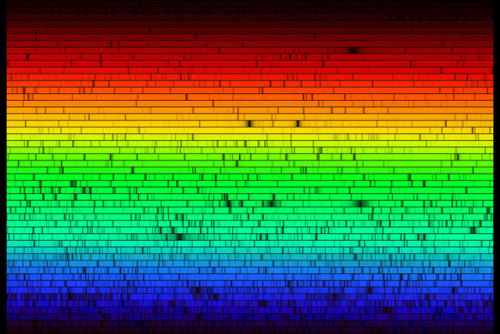
This is the visible spectrum of the light from the sun. And if you have played with white light and prisms before, it might come as a huge surprise to you to know that the spectrum from the sun is actually not continuous.

Why is it not ? The dark patches in the above spectrum arise from gas at or above the Sun’s surface absorbing sunlight emitted below.

Source
Since there are different types of gases that compose the sun, there are numerous wavelengths of light that get absorbed by these gases.

Source: xkcd
How do we know which line corresponds to which ? Well, it’s because we have a periodic table, and we know the spectrum of all the elements in it:

Source
And then it’s a matter of solving the jigsaw puzzle of fitting the spectrum with the tiles that you have. When we do so, we obtain the following composition of elements:

Source: Earth Blog
We can even take it one step further by finding the composition of other neighboring stars as well.

Source: Potsdam University
All of this information about the star can be captured from a simple spectrum. And this is why one of the most important tool that an astronomer has about an object is it’s spectrum.
Have a good one!
Edit: Added all sources for the images.
sure i guess sex is okay but have you ever closed a dozen tabs after finishing an academic paper
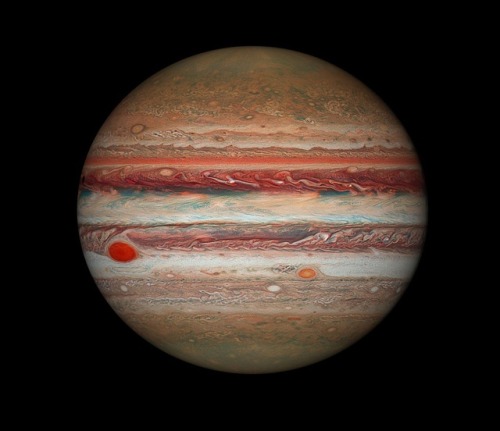
Hubble’s Jupiter and the Shrinking Great Red Spot
Image Credit: NASA, ESA, Hubble, OPAL Program, STScI; Processing: Karol Masztalerz
If Earth had Saturn’s Rings
From an excellent post by Jason Davis
From Washington, D.C., the rings would only fill a portion of the sky, but appear striking nonetheless. Here, we see them at sunrise.

From Guatemala, only 14 degrees above the equator, the rings would begin to stretch across the horizon. Their reflected light would make the moon much brighter.

From Earth’s equator, Saturn’s rings would be viewed edge-on, appearing as a thin, bright line bisecting the sky.

At the March and September equinoxes, the Sun would be positioned directly over the rings, casting a dramatic shadow at the equator.

At midnight at the Tropic of Capricorn, which sits at 23 degrees south latitude, the Earth casts a shadow over the middle of the rings, while the outer portions remain lit.

via x
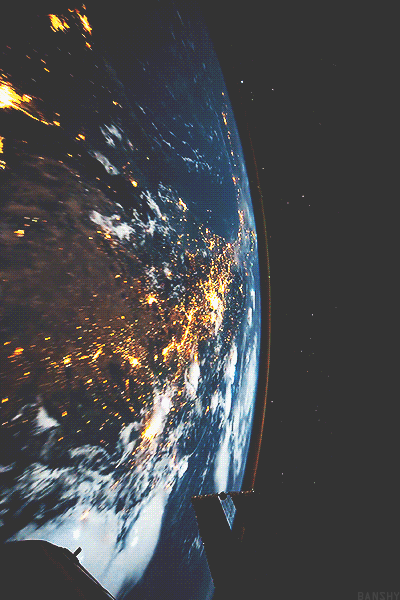
x nature blog x
what she says: i'm fine
what she means: isn't it crazy how the derivative of e^x is e^x? That's such an arbritrary number isn't it? At the same time it's not, though. Because at any point on e^x, the slope is equal to e^x. But at the same time, the integral of e^x is also e^x. so not only is the slope of e^x e^x, the area underneath the graph of e^x is also e^x. Does that not blow your fucking mind?


Halley’s Comet on 8 March 1986
Credit: NASA/W. Liller
What are Gravitational Waves?
Today, the National Science Foundation (NSF) announced the detection of gravitational waves by the Laser Interferometer Gravitational-Wave Observatory (LIGO), a pair of ground-based observatories. But…what are gravitational waves? Let us explain:

Gravitational waves are disturbances in space-time, the very fabric of the universe, that travel at the speed of light. The waves are emitted by any mass that is changing speed or direction. The simplest example is a binary system, where a pair of stars or compact objects (like black holes) orbit their common center of mass.

We can think of gravitational effects as curvatures in space-time. Earth’s gravity is constant and produces a static curve in space-time. A gravitational wave is a curvature that moves through space-time much like a water wave moves across the surface of a lake. It is generated only when masses are speeding up, slowing down or changing direction.
Did you know Earth also gives off gravitational waves? Earth orbits the sun, which means its direction is always changing, so it does generate gravitational waves, although extremely weak and faint.
What do we learn from these waves?
Observing gravitational waves would be a huge step forward in our understanding of the evolution of the universe, and how large-scale structures, like galaxies and galaxy clusters, are formed.
Gravitational waves can travel across the universe without being impeded by intervening dust and gas. These waves could also provide information about massive objects, such as black holes, that do not themselves emit light and would be undetectable with traditional telescopes.

Just as we need both ground-based and space-based optical telescopes, we need both kinds of gravitational wave observatories to study different wavelengths. Each type compliments the other.
Ground-based: For optical telescopes, Earth’s atmosphere prevents some wavelengths from reaching the ground and distorts the light that does.
Space-based: Telescopes in space have a clear, steady view. That said, telescopes on the ground can be much larger than anything ever launched into space, so they can capture more light from faint objects.
How does this relate to Einstein’s theory of relativity?
The direct detection of gravitational waves is the last major prediction of Einstein’s theory to be proven. Direct detection of these waves will allow scientists to test specific predictions of the theory under conditions that have not been observed to date, such as in very strong gravitational fields.
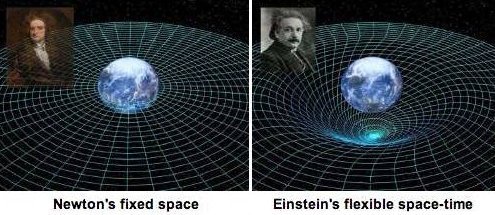
In everyday language, “theory” means something different than it does to scientists. For scientists, the word refers to a system of ideas that explains observations and experimental results through independent general principles. Isaac Newton’s theory of gravity has limitations we can measure by, say, long-term observations of the motion of the planet Mercury. Einstein’s relativity theory explains these and other measurements. We recognize that Newton’s theory is incomplete when we make sufficiently sensitive measurements. This is likely also true for relativity, and gravitational waves may help us understand where it becomes incomplete.
Make sure to follow us on Tumblr for your regular dose of space: http://nasa.tumblr.com










The Surprising Reason Why Neutron Stars Don’t All Collapse To Form Black Holes
“The measurements of the enormous pressure inside the proton, as well as the distribution of that pressure, show us what’s responsible for preventing the collapse of neutron stars. It’s the internal pressure inside each proton and neutron, arising from the strong force, that holds up neutron stars when white dwarfs have long given out. Determining exactly where that mass threshold is just got a great boost. Rather than solely relying on astrophysical observations, the experimental side of nuclear physics may provide the guidepost we need to theoretically understand where the limits of neutron stars actually lie.”
If you take a large, massive collection of matter and compress it down into a small space, it’s going to attempt to form a black hole. The only thing that can stop it is some sort of internal pressure that pushes back. For stars, that’s thermal, radiation pressure. For white dwarfs, that’s the quantum degeneracy pressure from the electrons. And for neutron stars, there’s quantum degeneracy pressure between the neutrons (or quarks) themselves. Only, if that last case were the only factor at play, neutron stars wouldn’t be able to get more massive than white dwarfs, and there’s strong evidence that they can reach almost twice the Chandrasekhar mass limit of 1.4 solar masses. Instead, there must be a big contribution from the internal pressure each the individual nucleon to resist collapse.
For the first time, we’ve measured that pressure distribution inside the proton, paving the way to understanding why massive neutron stars don’t all form black holes.


Paradise View
http://society6.com/jaredatkins
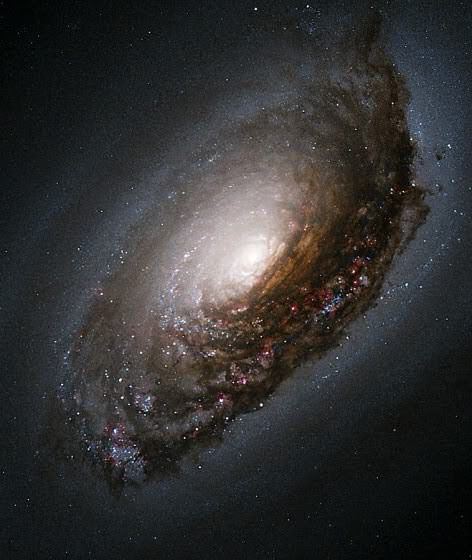
M64, The Black Eye Galaxy

The faint rings of Uranus, shot in 1986, are made of countless fragments of water ice containing radiation-altered organic material.
Credit: NASA/JPL/Michael Benson, Kinetikon Pictures